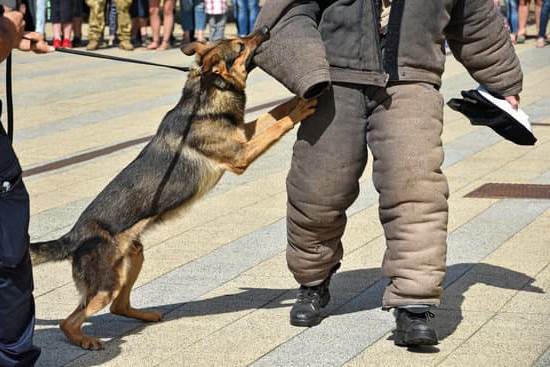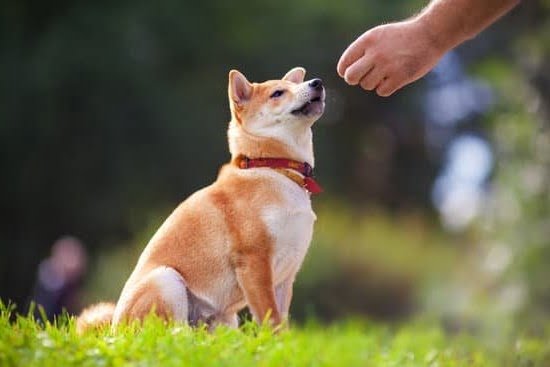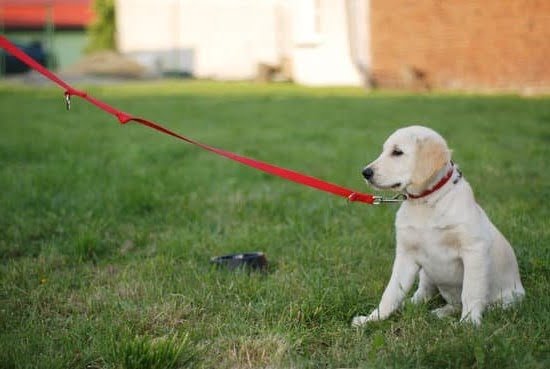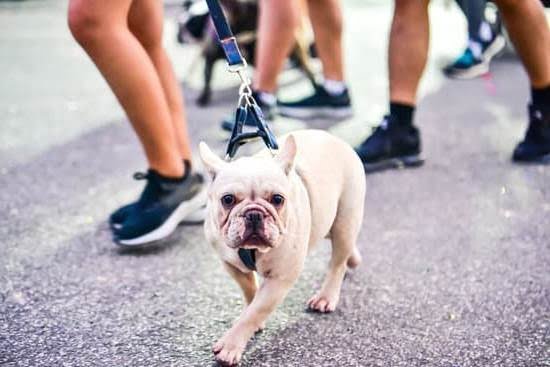Is your furry friend causing chaos every time they encounter other dogs? Dealing with a dog that doesn’t behave well around other can be frustrating and stressful for both you and your pet.
In this article, we will delve into how to train your dog to behave around other dogs. From understanding canine behavior to advanced training techniques, we aim to equip you with the necessary tools and knowledge to foster a positive relationship between your dog and other furry companions.
Understanding your dog’s behavior around other dogs is crucial when it comes to training. By gaining insight into why your dog reacts in certain ways, you can better address any behavioral issues. Additionally, proper socialization plays a significant role in ensuring that your dog interacts positively with others. We will explore the importance of socialization and how it contributes to shaping your dog’s behavior around fellow canines.
In our discussion, we will also cover basic obedience training for social situations, desensitization and counterconditioning techniques, as well as positive reinforcement methods for good behavior. These training strategies aim to provide practical solutions for managing your dog’s behavior around other dogs.
Additionally, we will address fear and anxiety issues that may arise during these encounters and offer advice on how to navigate through them effectively. Ultimately, our goal is to guide you through the process of training your canine companion, facilitating improved behavior when interacting with other dogs.
The Importance of Proper Socialization
Proper socialization is crucial for ensuring that your dog behaves appropriately around other dogs. It involves exposing your pet to a wide variety of experiences, animals, people, and environments during their formative weeks, starting as early as 3 weeks old to about 14 weeks.
The goal is to allow the puppy to build confidence in different scenarios and prevent the development of fear-based reactions. If this critical period for socialization is missed, it can be more challenging to help your furry friend feel comfortable and safe around other canines.
When dogs are not socialized early on or have had negative experiences with other dogs in the past, they may display undesirable behaviors such as barking, growling or pulling on the leash when they encounter other dogs. This lack of proper behavior can lead to unsafe interactions and make life difficult for both pets and their owners.
Socialized and well-behaved dogs are also generally happier pets. When properly introduced during their socialization period, dogs will learn good play habits which will stay with them through adulthood.This will result in a significantly higher quality of life for your pup.
| Aspect | Details |
|---|---|
| Socialization Period | Between 3-14 weeks old |
| Typical Negative Behaviors Resulting From Lack Of Socialization | Barking, Growling or pulling on the leash when encounteringother dogs. |
Basic Obedience Training for Social Situations
When it comes to training a dog to behave around other dogs, it is important to understand their behavior in social situations. Dogs communicate with each other through body language, vocalizations, and various other cues. It is crucial for pet owners to recognize the signs of aggression, fear, anxiety, and relaxation in their dogs when they are interacting with other animals. By understanding these behaviors, pet owners can intervene when necessary and prevent any negative encounters.
The Importance of Proper Socialization
Proper socialization plays a vital role in a dog’s ability to behave well around other dogs. Early socialization can help dogs feel more confident and relaxed when encountering new canine companions. Introducing puppies to a variety of friendly and well-behaved dogs in controlled environments can help them develop good social skills. Additionally, exposing adult dogs to positive experiences with other dogs can also improve their behavior and reduce the likelihood of aggression or anxiety.
Incorporating basic obedience training into your dog’s routine is essential for preparing them for social interactions with other dogs. Teaching your dog commands such as “sit,” “stay,” “come,” and “leave it” can provide you with better control over their behavior in the presence of other dogs.
These commands can be used to redirect your dog’s attention, keep them calm, or remove them from potentially tense situations. Basic obedience training lays the foundation for successful interactions between your dog and others.
| Behavior | Description |
|---|---|
| Aggression | Signs include growling, baring teeth, lunging |
| Fear | Signs include cowering, trembling, avoiding eye contact |
| Relaxation | Signs include loose body posture, wagging tail, open mouth |
Desensitization and Counterconditioning Techniques
Desensitization and counterconditioning are important techniques in training your dog to behave around other dogs. These methods can help your dog overcome fear, anxiety, or aggression towards other dogs, and replace those negative emotions with positive associations.
The desensitization process involves gradually exposing your dog to the presence of other dogs in controlled environments. This means starting at a distance where your dog feels comfortable and slowly decreasing the distance over time as they become more relaxed and confident.
Counterconditioning works by changing your dog’s emotional response to other dogs through positive reinforcement. This can be done by rewarding calm behavior around other dogs with treats, praise, or play. Over time, your dog will learn that being around other dogs results in positive experiences.
These techniques require patience and consistency, so it’s important to work with a professional trainer who has experience in desensitization and counterconditioning. By using these methods, you can help your dog develop more positive associations with other dogs and improve their behavior in social situations.
Positive Reinforcement Methods for Good Behavior
Positive reinforcement is a powerful tool when training a dog to behave around other dogs. This method involves rewarding your dog for good behavior, which helps to reinforce the desired actions. When your dog displays calm and appropriate behavior around other dogs, be sure to offer praise, treats, or toys as a reward. This positive association will help your dog understand what is expected in social situations and encourage them to continue exhibiting good behavior.
In addition to rewards for good behavior, it’s important to redirect and manage your dog’s behavior when they exhibit undesirable actions around other dogs. For example, if your dog becomes overly excited or aggressive, calmly remove them from the situation and redirect their focus onto something else.
Consistency is key when using positive reinforcement – by consistently rewarding good behavior and redirecting unwanted behaviors, your dog will begin to understand how they are expected to behave in the presence of other dogs.
It’s important to note that every dog is different, and what works for one may not work for another. Be patient and observant of your dog’s reactions in social situations, and tailor your positive reinforcement methods accordingly. With time, effort, and dedication, you can help your dog develop positive associations with other dogs and improve their behavior in social settings.
Addressing Fear and Anxiety Around Other Dogs
Identifying Fear and Anxiety
It is important for dog owners to be able to identify when their dog is experiencing fear or anxiety around other dogs. Signs of fear include trembling, cowering, whining, or barking excessively. Dogs may also show signs of anxiety such as panting, pacing, or trying to escape from the situation. Understanding these cues can help in addressing the issue effectively.
Gradual Exposure and Positive Associations
One effective way to address fear and anxiety around other dogs is through gradual exposure and creating positive associations. This involves exposing the dog to other dogs in a controlled environment at a distance where they feel comfortable. Over time, the distance can be decreased as the dog becomes more relaxed, always ensuring that the experience remains positive for the dog.
Seeking Professional Help
In some cases, addressing fear and anxiety around other dogs may require professional help. A certified dog trainer or behaviorist can assess the situation and develop a tailored training plan to desensitize the dog to other dogs and reduce their anxiety. They can also provide guidance on how to manage interactions with other dogs in daily life.
By understanding fear and anxiety in dogs and utilizing effective training methods, it is possible to help them overcome their aversion to other dogs and build positive relationships with them. With patience, consistency, and positive reinforcement, significant improvements in behavior can be achieved over time.
Advanced Training for Improved Behavior
Once your dog has mastered basic obedience and is comfortable interacting with other dogs, you can consider advanced training techniques to further improve their behavior in social situations. Here are some advanced training methods to consider:
- Advanced obedience commands: Once your dog has mastered basic commands like sit, stay, and come, you can work on teaching them more advanced commands such as heel, leave it, and settle. These commands can be especially useful in busy or distracting environments where your dog needs to focus on you rather than other dogs.
- Agility training: Agility training is not only a fun way to bond with your dog, but it also helps improve their physical coordination and mental acuity. By navigating through obstacle courses and learning to follow your cues, your dog can become more responsive and confident around other dogs.
- Therapy dog training: If your dog is exceptionally well-behaved and enjoys being around other dogs and people, they may be a good candidate for therapy dog training. This type of training focuses on teaching dogs how to provide comfort and support in various settings such as hospitals, nursing homes, and schools.
By continuing to train and challenge your dog with advanced techniques, you not only reinforce good behavior but also strengthen the bond between you and your pet.
Remember that every dog is unique, so it’s important to tailor the training methods to suit your individual pet’s personality and abilities. Be patient, consistent, and always use positive reinforcement techniques to encourage good behavior when working on advanced training with your furry friend.
Resources for Continued Support and Training Options
Professional Dog Trainers
One of the most effective ways to continue training your dog to behave around other dogs is to work with a professional dog trainer. Look for trainers who specialize in behavior modification, socialization, and obedience training. A professional trainer can assess your dog’s behavior, identify specific issues, and create a customized training plan to address any challenges. They can also provide ongoing support and guidance as you work through the training process.
Canine Behavior Classes
Enrolling your dog in a canine behavior class can be a great way to provide ongoing socialization and training opportunities. These classes are often specifically designed to help dogs learn how to interact with other dogs in a controlled environment. In addition to providing practical training exercises, these classes can also offer valuable support and advice from experienced instructors. Look for classes that focus on positive reinforcement methods and provide individualized attention for each dog’s unique needs.
Online Training Resources
In today’s digital age, there are many online resources available for continued support and training options. You can find virtual classes, webinars, instructional videos, and articles that cover a wide range of topics related to dog behavior and socialization.
Look for reputable sources that offer evidence-based training techniques and positive reinforcement methods. Keep in mind that while online resources can be valuable tools, they should not replace hands-on training with a professional if your dog is struggling with significant behavior issues around other dogs.
Conclusion
In conclusion, building a positive relationship with other dogs is an attainable goal for any dog owner through understanding and proper training. By recognizing and understanding dog behavior around other dogs, owners can effectively address any behavioral issues and set their pets up for successful social interactions.
The importance of proper socialization cannot be overstated as it lays the foundation for a dog’s behavior around others. Through basic obedience training, desensitization and counterconditioning techniques, as well as positive reinforcement methods, owners can help their dogs develop good behavior around other dogs.
It is crucial to address any fear and anxiety that may arise in a dog when encountering other dogs. Doing so will prevent negative associations from forming and allow the dog to feel more comfortable in social situations.
For those seeking advanced training for improved behavior, there are various resources available for continued support and additional training options. With patience, consistency, and the right approach, any dog can learn to behave positively around other dogs and build lasting relationships with them.
Ultimately, the key to success lies in the hands of the owner. By dedicating time and effort to properly train and support their dogs, owners can ensure that their pets have a positive relationship with other dogs. With the right tools and techniques at their disposal, every owner has the potential to enjoy harmonious interactions with other dogs while providing a fulfilling experience for their furry companions.
Frequently Asked Questions
How Do I Train My Dog to Calm Down Around Other Dogs?
Training your dog to remain calm around other dogs requires patience and consistency. Start by exposing your dog to other dogs from a distance where they can remain calm and reward them for their good behavior.
Gradually decrease the distance as your dog becomes more comfortable. Use positive reinforcement techniques such as treats or praise to encourage calm behavior, and avoid punishing or scolding your dog for reacting to other dogs.
How Do I Get My Dog to Stop Reacting to Other Dogs?
To help your dog stop reacting to other dogs, it’s important to identify the triggers that cause the reaction and work on desensitizing your dog to those triggers. This may involve gradually exposing your dog to other dogs in controlled environments while using positive reinforcement to encourage calm behavior.
You can also work on obedience training so that you have better control over your dog’s reactions in these situations.
How Do I Train My Dog to Ignore Other Dogs on Walks?
Teaching your dog to ignore other dogs on walks involves training them to focus on you instead of the distractions around them. Using treats, praise, and consistent commands can help reinforce this behavior.
Start by practicing in a low-distraction environment and gradually increase the level of distraction as your dog improves. It’s important to be patient and consistent in reinforcing the desired behavior during walks with plenty of practice sessions.

Welcome to the blog! I am a professional dog trainer and have been working with dogs for many years. In this blog, I will be discussing various topics related to dog training, including tips, tricks, and advice. I hope you find this information helpful and informative. Thanks for reading!





